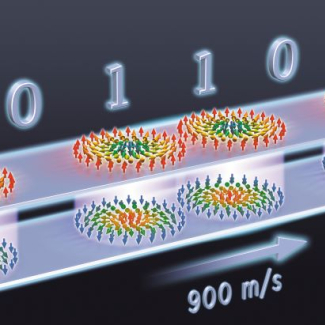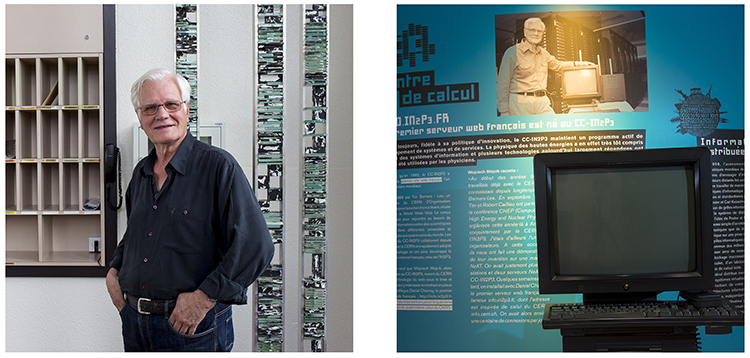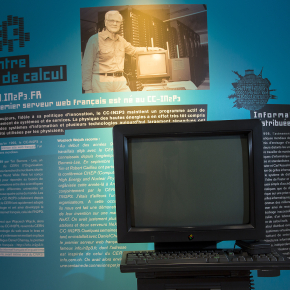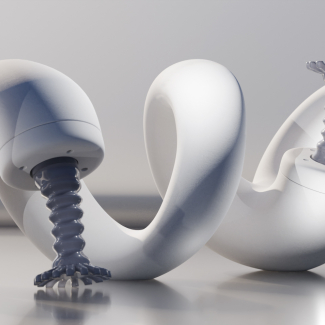
The Web turns 30: the CNRS behind the creation of the first French web site
The foundations of the World Wide Web, a technology allowing users to navigate from one set of information to another, emerged thirty years ago at CERN1 . In France, Wojciech Wojcik and Daniel Charnay, two CNRS engineers working at the CNRS’ IN2P3 Computing Centre in Lyon, built the first server, and hence the first web page. On 12 March, journalists are invited to meet these pioneers of the Web at the IN2P3 Computing Centre, where an anniversary event organised by CERN will be broadcast (in English).
- 1The European Organization for Nuclear Research.
The Internet was invented in the 1960s in the laboratories of the American army, but popularised by the creation of the World Wide Web by particle physicists. In March 1989 in Geneva, Tim Berners-Lee, a British computer scientist at CERN, laid the foundation for the Web, a concept his superior called “vague, but promising”. His goal? To offer physicists working at universities and research institutes around the world a way to share a single piece of information easily. Before this, it was possible to send files and correspond by email, but impossible to store a universally accessible, single reference copy.
The World Wide Web was officially born in 1991 when the first site became accessible outside CERN. A long-standing partner of CERN, the CNRS and engineers from the IN2P3 Computing Centre (CC-IN2P3, CNRS)2 already worked with Tim Berners-Lee and his team on a regular basis on the subject of processing data in major particle physics experiments.
In September 1992, Tim Berners-Lee presented his invention for the first time at a joint scientific conference organised by CERN and the CNRS in Annecy, France. After this conference, Wojciech Wojcik, a developer and user support engineer, returned to IN2P3 with this technology in tow and installed the info.in2p3.fr server (based on CERN’s model, info.cern.ch) on a NeXTcube station3 , the same computer used by Berners-Lee. The first French web server was born.
Later, with network engineer Daniel Charnay, Wojcik created the first web page of the first French web site, the fifth of its kind in the world. It included a brief description of the IN2P3 Computing Centre, a picture of the building, and links to the few other web sites in existence at the time4 .
Designed as a completely open-access tool perfectly suited to the needs of physicists, the World Wide Web widely contributed to bringing the Internet to the general public and its well-known, spectacular success.
For more information: visit CERN’s special web site: https://web30.web.cern.ch/

“When I saw Tim Berners-Lee’s presentation in Annecy in 1992, I immediately knew how well his incredible idea would help French particle physics researchers. Two weeks later, the first French server, and first French web site, info.in2p3.fr, were launched. The Web as an idea incarnates the spirit of CERN: open, public, free and scalable.”
© Patrick DUMAS/CEA/CNRS Photothèque
- 2Located in Lyon, France at the LyonTech-la Doua Campus, the IN2P3 Computing Centre is a CNRS facility specialised in processing computer data generated by major experiments in the field of physics.
- 3This computer is currently on display at the IN2P3 computer museum.
- 4The sites of CERN, DESY and SLAC, other particle physics research centres.


